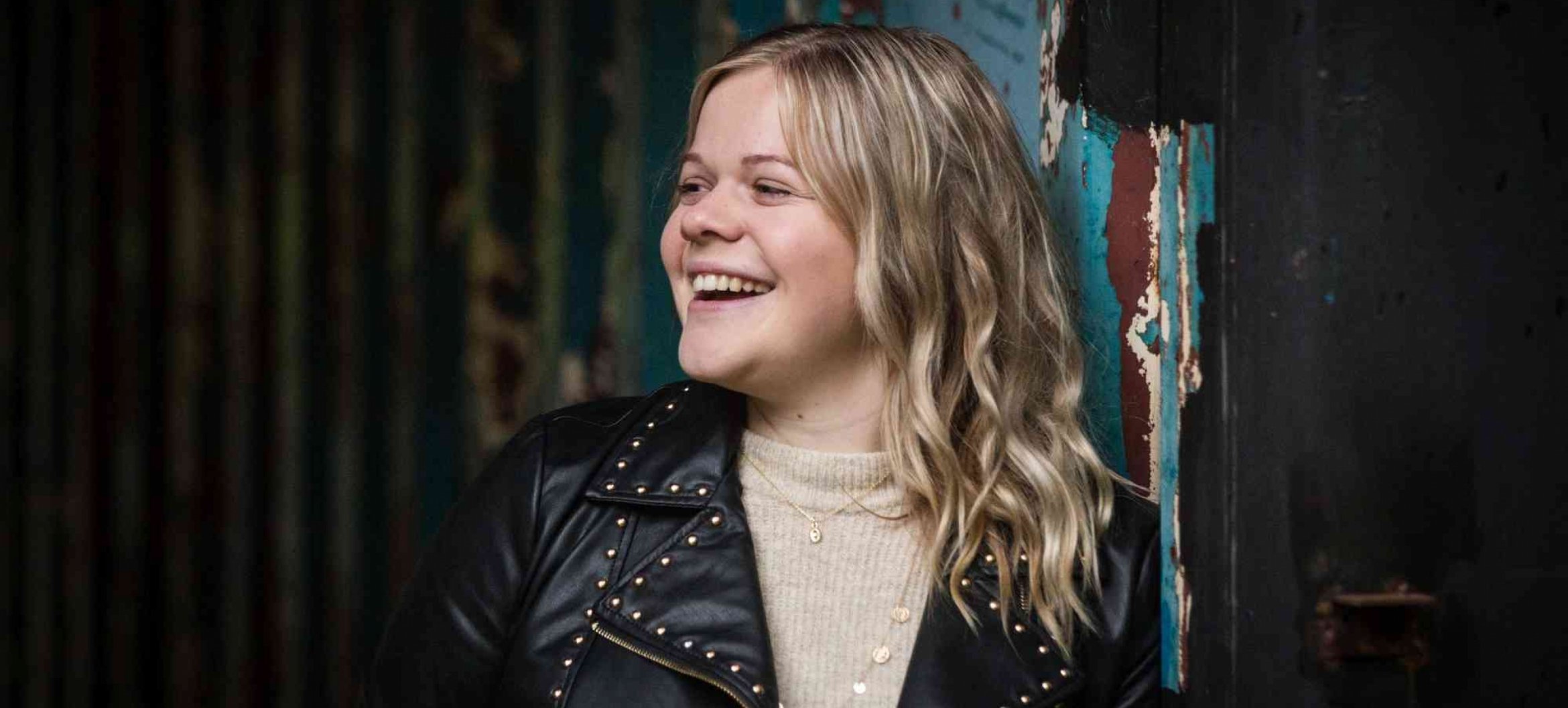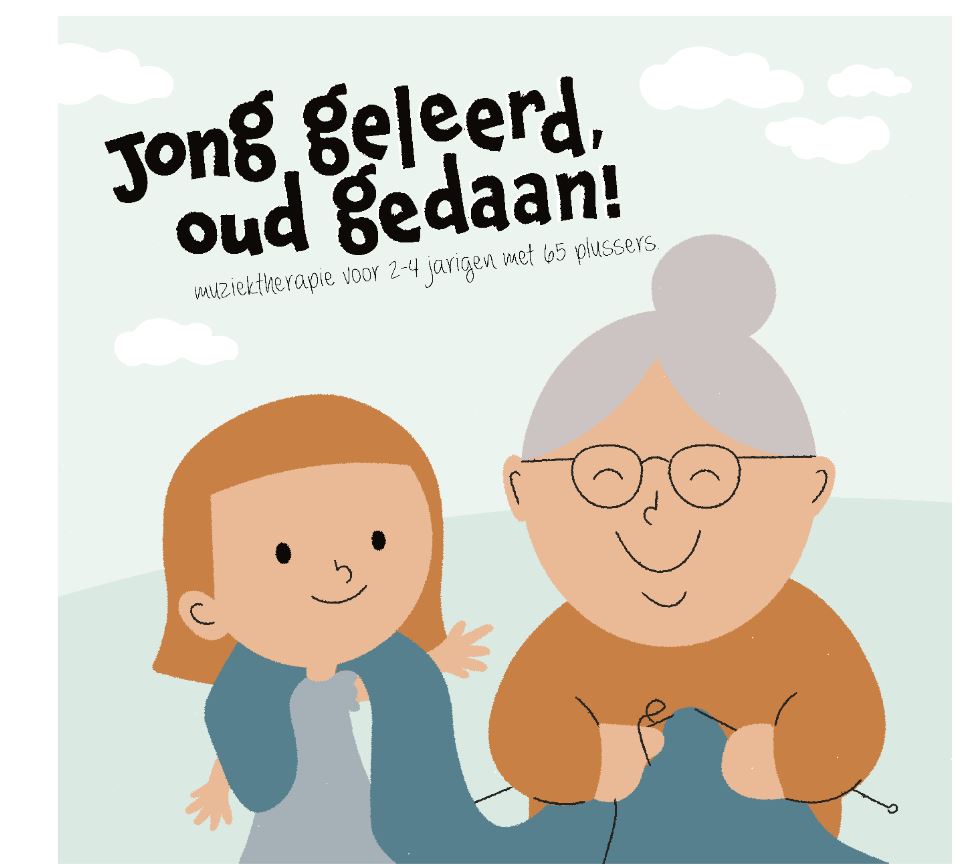‘A good musical education is extremely important’
Anyone opting for the Music Therapy course at ArtEZ will not only be learning to be a therapist, but will be doing a academy of music course as well. ‘That can be tough, but it makes for a solid musical basis. You don’t want to be struggling with difficult chords when you’re with your client,’ Kim Otten explains. In June 2021 she will graduate from the Music Therapy course.

Music therapy is a tough course in terms of hours, Kim says. ‘But it wasn’t an option to do either one or the other. I was keen to combine them.’ Music theory is a key aspect of the course. As is the practical side of music: singing and playing the piano. You are also taught about all kinds of psychological issues. ‘You learn about the DSM-V – the manual of mental disorders – you learn how children develop, you learn what music exactly does in the brain. Finally, you are taught how to integrate those two sides into music therapy and what methodologies to use.’
The deciding factor
Before Kim started studying Music Therapy, she did the Entrepreneurial Artist course at the Twente Regional Training Centre. ‘There I saw a presentation by someone who had gone on to do Music Therapy after the Regional Training Centre and that really appealed to me. At the time I was hesitating between Music Therapy, Music in Education and Pop Academy.’ What won her over to Music Therapy was a visit to her mother’s terminally ill friend. ‘I visited her at the hospice and happened to have a guitar with me. She asked if I wanted to play some music, and after I played Good Riddance by Green Day and Zombie by The Cranberries, she said I had given her one of the better days of her illness. That was the deciding factor to take up Music Therapy.’
Good musical basis
At the academy of music you receive four years of intensive music classes, in an environment where everything revolves around music. After the Music Therapy course, you have a bachelor degree in music, and you are both a musician and a therapist. Kim explains: ‘As a music therapist, you need to have a solid musical basis. Music is your means of making contact, of bringing about change. If you master this musical language to perfection, you can go on to focus all your attention on the therapy and on the client. Then you’re not struggling with difficult chords or anything.
Personal process is rather confronting
The course has been good for her development, Kim says: ‘I was initially quite an insecure girl, but a therapeutic education like this also sends you through a personal process. That was sometimes rather confronting, because I could link many of the things I learned to my personal life, I have had quite a tough childhood. That was intense at times, but also good for me.’
Learn Young, Learn Fair
For her graduation, Kim made a final product: A handbook for music therapists: Learn Young, Learn Fair. It contains a new form of therapy: intergenerational music therapy. ‘This involves working with multiple generations, in my case over-65s with depression or loneliness issues and children aged two to four who make music together. In my book I describe the preconditions for the therapy, the different treatment phases you go through, indications, contraindications and how to set a goal. The book will be published and be available for sale after my graduation for anyone interested.’

Benefits for the elderly and children
The elderly benefit greatly from having children in the nursing home. They learn to recognise again what it is like to be young. In this way, you could alleviate symptoms of depression or loneliness. ‘For children, it’s good to learn to respect older people, to learn how to make contact, to learn how to control impulses, because not everyone is as quick-witted anymore, and to get to know another generation.’
Major challenge
Working with children as a means of therapy is not without risk, Kim says. If you have innocent children interact with elderly people with depression, there is a chance that the child will be harmed. ‘For scientific research you have to get approval from an ethics committee. For this therapy, it wasn’t necessary. I had no framework, no boundaries, I had to set them myself. I have something built into my manual for that. For example, the first three sessions are observation sessions: how does the child react, does it like it, can it move on? But also: how does the older person react, are they suitable for the form of therapy and so on? Only after that do they come into contact with the children.’
Easily transferable
Learn Young, Learn Fair has not only become a handy booklet for music therapists. The theory can easily be imparted, for example, to the staff at the day care centre. Helpful, because with the current shortage of music therapists, it is good that others can also get started with the material. ‘However, that has to be done with the right coaching and training and monthly monitoring: How’s it going? Any questions? Is everything clear? The music therapist then helps assess the client’s next steps.’
Mutually complementary jobs
After her graduation, Kim will study Tailor-Made BA Music in Education in Enschede. ‘Music therapist and music teacher are mutually complementary jobs. For both you need a solid musical background, which I will already have after the Music Therapy course. As a lecturer, you also look at children differently when you have a therapeutic background. How to deal with a child with ADHD or autism, for example. A combination of both jobs seems very valuable to me.’


